(Published earlier in slightly different form in O2 Magazine, June 2011, and on this website, in Dutch, June 27th)

Mankind currently uses so much energy that it escapes every imagination. The rounded figures for 2010 can be found below, and whether it would be a thousand times more or a thousand times less, would not makes any difference for your perception. This lack of sense of scale, quite often tends to lead to the easy assumption that a certain sympathetic energy source, or reducing our energy footprint, is the solution to all our energy problems. This makes it hard to have a meaningful discussion about the world’s energy supply.
In this article I will try to identify the real options for the world’s energy supply in 2050.
Energy demand in 2050
Future energy use, according to the sustainable approach
Organizations that push for a rapid change toward a sustainable society, have for many years used the model as shown in the picture from the recent “The Energy Report” of Ecofys / WWF.
In this scenario, fossil and nuclear energy run out quickly, to be completely replaced by renewable sources, while at the same time the total world energy consumption decreases. This results in an entirely sustainable energy supply in 2050. This process is called “the energy transition”, and is often illustrated with beautiful graphics. Such a picture tells us: “Yes, we can, if we only want to!”
Reality, however, appears to be a lot tougher as soon as one starts to calculate all the consequences.
The real energy transition
Energy demand in the future is largely determined by a different energy transition, which is the one from an archaic economy to a minimal level of prosperity.
People in an archaic society cook and heat with wood, and move themselves and goods on foot, by bicycle or by pack animal. Minimum wealth (as in Eastern Europe) is characterized by industrialization, living in simple apartments, with electricity and fossil fuel based heating, and transportation with cars and trucks. The transition from archaic to a minimal level of wealth, leads to an enormous increase in energy consumption per capita. Further growth of wealth makes a lot less difference in energy consumption per person.
At present over one billion fair to very wealthy people consume 60% of all energy. This means that 20% of the world uses 6 times as much energy per person as the rest. We also know that the people of a.o. China, India, Indonesia and Brazil are about to step to the minimum level of prosperity. This will occur within one or two generations, if their development follows ours on equal footing, which we may only hope.
This means that the number of people with minimal or higher level of prosperity will, within a few decades, increase from 1 to about 4 billion. If the extra 3 billion people, indeed, will use six times as much energy per person as we do now, world energy consumption will increase with 150% at least, i.c. by a factor of 2.5.
Energy use per capita
Prerequisite for this factor of 2.5 is that the energy consumption per wealthy person in the next 40 years remains the same, otherwise the increase will be even greater. But we all want more gadgets, more travelling after our retirement than our parents, download more, live in bigger homes and drive safer and cleaner cars. All this would cost a lot more energy.
Yet there is hope for the future energy consumption to stabilise: In Europe and the U.S. in recent years, we more or less stagnate in energy use per person, despite an increasing wealth. This is partly the result of us importing more and more energy, hidden in products from Asia. But through further energy conservation measures it may be possible to reduce the power consumption per wealthy person. However, you have to be a great optimist to see room for more than 25% reduction per wealthy person on average, worldwide. The 25% reduces our calculated increase in energy consumption in 2050 than from 150% to about 90%.
That implies the right answer to the question whether energy savings can solve the energy deficit of the future. That answer is no, because energy savings cannot possibly compensate the dramatically growing global energy demand of the future. But it is a major condition. Because, obviously, for each realistic solution it is necessary that the energy use per rather prosperous person will at least not increase.
Forecasts
Recently published forecasts of energy demand by ExxonMobil (see figure), BP, Total and the IEA show a GDP (Gross Domestic Product) growth of ca.150% in 2050 (extrapolated), comparable with our number of wealthy people. But their energy curve does not follow the GDP , as you’d expect, but lags far behind. It results in approximately 50% growth in 2050, considerably lower than our lowest estimate of 90%.
The reason is obvious: the energy supply simply cannot increase fast enough to follow the GDP growth. The resulting energy deficits lead to a higher energy price, and thus to a rather coercive demand reduction.
The difference between our calculation and these predictions defines the force field that the world is entering. With the increase in energy demand in 2050 by about 50%, comes a 40% less energy consumption per wealthy person, compared to present time. This decrease will not occur because the richer part of the world will use less per person: in the ExxonMobil forecast, energy consumption in Europe and the U.S. increases even with a few percent. The 40% decline will come from the large group of the least affluent, who, because of the rising energy prices, will have to manage with a much lower energy use. This way the “real” energy transition graph will flatten.
These developing economies will only to a certain degree manage to adapt by being more energy efficient. The expensive energy will therefore also be a significant drag on the prosperity of those emerging economies in particular, that have no own energy resources. From a humanitarian perspective, this is regrettable.
Said Ecofys / WWF report says that as a result of a very strong government intervention, the total energy consumption of the world, should and will decrease, despite the growth of prosperity in China and India. The consequence is that energy consumption per wealthy person drops to 30% of what it is today. If it does, the welfare state as we know it, is no longer possible: currently food production alone already comes close to requiring that amount of energy. There are just too many basic needs like food, heating and transport that depend on cheap energy, to allow a reduction of our energy use with 70%.
The possible sources for the future
According to our forecasts, in 2050 world energy demand will be 1.5 to 2 times as much as now, whereas the fossil fuels, that we are now almost entirely dependent on, will at some point run out. What source will fill this great gray strategic gap?
Nuclear power
I’ve thought for a long time that we were going to fill the gap with nuclear power. But if you start calculating, this appears to be no realistic option. There are approximately 450 nuclear power plants now, which provide about 17% of electricity (which is 2% of world primary energy demand), and which are almost all going to be decommissioned in the next 30 years. If the energy demand in 2050 has doubled, and also the capacity of each new plant is twice the present ones, 450 new, much larger power stations must be built to just maintain the current market share of nuclear power.
I expect that this will happen despite the Fukushima disaster, but that is going to be the upper limit.
In order to fill the energy gap, more than 10,000 large nuclear power plants are needed. Even as a proponent of nuclear power, this is not something you would want to happen, at the current state of technology.
Sustainable sources
In the book “Sustainable Energy Without the Hot Air” David MacKay demonstrated that even in a wealthy, densely populated country like United Kingdom it is possible to generate all energy in a sustainable way. So a sustainable energy supply in 2050 is indeed possible?
Let’s have a look at “plan M”, with the fresh green country map of England, which is the “average” scenario, according to MacKay.
In this plan, the daily energy use of the average Englishman is 70kWh. MacKay pictures a future where this ration is supplied in a sustainable way. But to achieve this, he uses 23% nuclear energy, 23% imported electricity, 4% coal and 17% efficiency gains by using heat pumps. Furthermore, in the 70 kWh/p/d the 40 kWh/p/d energy which is currently hidden in imported goods is not included. So on the beautiful green map with alternative sources actually only 21% of English energy consumption is generated in the “classic” sustainable manner.
To generate this one fifth of the energy supply in a sustainable way, an enormous transformation of the country is needed: most of the less inhabited regions have to get another destination. The whole world outside the city changes completely in character and appearance. Nature and agriculture become almost entirely subject to energy production.
MacKay estimates the energy use per person as 70 kWh per day per person. But currently that is app. 150 kWh/p/d (imports excluded). All renewable sources on the map together would thus only generate only 12% of the daily energy use if that were as large as the current UK consumption. Admittedly, MacKay partially bases his 70kWh on a number of realistic efficiency improvements, but the assumption of a day use of 70 kWh per person remains very optimistic.
Cost of renewable sources
According to by MacKay , the renewable sources on the map cost € 446 billion. But he calculates for his biggest contributor, ic wind power, only half the price of large current wind projects, so he is again very optimistic.
Furthermore, the cost of a substantial part of his plan M, biomass and biofuels (30% of the renewable energy part) is not included. A very optimistic estimate of its price amounts to € 244 billion. Then the total costs are € 690 billion. That is € 55,000 per family with two children. And that is certainly a very optimistic estimate. For that amount, the family gets in return that for 15 years, 12% to 21% of it’s energy use is produced as renewable energy. After 15 years once again a similar amount has to be spent for replacing the renewable installations.
The list of renewable sources below, arranged according to MacKay’s cost calculations, shows that the chosen combination is also the cheapest, assuming that all opportunities for tidal lagoons, tidal current, onshore wind, and waste incineration have been used.
The UK is also for all sources (except the three most expensive), a nearly ideal country. This sustainable scenario of MacKay for the United Kingdom can therefore not been applied globally.
The sneek-in effect of very high costs of renewable energy can be observed in Germany: there a huge amount of solar cells has been established that has costed €1,000 per inhabitant, and that will provide about 0.5% of current energy consumption for app. 15 years. Converted to 100% of the energy supply, and at 5% interest, this would amount to more than € 70,000 per family per year.
I do not think that MacKay’s proposition to the citizens of supplying 21% renewable energy at this cost is realistic. Particularly since the word “optimistic” has appeared very regularly in the calculations.
Raw materials, manufacturing and electrification
In his book MacKay does not mention the problems of the necessary scaling-up of the production facilities for energy producing equipment. Because renewable power generation is so extensive, huge amounts of equipment are needed. The book casually talks about 64 GW of wind power (for 7% of the energy supply), but this requires that no less than 13,000 steel masts are built, each half the height of the Eiffel tower, and 39.000 wings twice the size of an Airbus A380 wing. Half of those turbines are planned in the North sea, requiring additional huge underwater foundation constructions.
This cannot “happen” overnight.
Three serious problems arise when scaling up the production of renewable power sources that in itself are suitable and cheap enough to contribute substantially to the energy supply.
Raw materials
Large wind turbines require about 800 tons of steel each, dozens of tons of poorly to non-recyclable composite material, and 800 pounds of neodymium for the (preferred) permanent magnets. The wind turbines needed for the United Kingdom would need as much as 10,000 tons of neodymium. That is two thirds of present world annual production. But MacKay also needs a lot of electric cars for his plans (the entire transport sector becomes more or less electric). For 30 million British electric cars need an additional 80,000 tons of neodymium is needed.
In 2050 the UK uses less than 1% of the world’s energy supply. For a sustainable world, one hundred times the UK need of materials is required. Then it is no longer an issue of a shortage of production capacity, but of far too small recoverable world reserves.
A similar problem exists with the indium and gallium needed for solar cells and lithium for batteries. And a recent report by Dutch TNO researchers even calculated that huge problems might occur with the total copper reserves if we want to electrify our society.
Because of the resulting scarcity of materials, very large scaling-up of wind turbine or PV production is more likely to result in a considerable increase in cost per kW, than the necessary and often predicted strong decrease.
Production capacity
In order to build so many windmills (wave turbines, etc), the production capacity for them has to grow very rapidly. Capacity growth in heavy construction of more than 15% a year is hard to imagine. That’s because to do so, you have to scale up the entire chain of production, including mining and resources, for both products and for the factory buildings and the means of production themselves. This happens only in such a furious rate (15% per year, doubling every 5 years) when under extreme pressure, and when there is no doubt whatsoever about a potential emerging competitive technology, or a sudden decrease in demand.
In order to scale up from an annual production of 100 giant 5MW wind turbines, to the desired 13,000 of MacKay, even when there is a forced scaling-up of 15% per year, you still require a minimum of 22 years. But after delivery of the last mill, this huge amount of production capacity remains largely empty, with the last brand new 30% of capacity on average only produced something during one year.
Also the raw materials and supply industry collapse after the 13.000st wind turbine has been placed.
Obviously, calculating based on a simple scaling rate is far too simplistic. The development is much slower, and lingers by the time sufficient capacity has been built for the expected replacement market.
In that case it takes a total of approximately 30 years before you reach the number of 13,000 wind turbines.
And that’s the most optimistic estimate.
Such a huge industry, including the commodity chain, simply takes many decades to reach this scale.
Electrification of the society
Virtually all renewable power sources are electrical.
Making the electricity supply 100% renewable, may already be an impossible challenge, as will be evident by now. But even then we are still only at one third of total power production.
The use of electrical power for other forms of energy consumption requires not only the production of energy and therefore the factories to build these turbines etc, but also a total conversion of all energy-using equipment to electric. All heating systems, vehicles and industrial plants will have to be be replaced by entirely different devices. All these require new production capacity to be built. That is a drastic intervention, which will take many commodities, a lot of money, and surely a lot of time. Expectations of doing that in 30 or 50 years are really not realistic.
So we should write off renewable energy entirely?
If we limit ourselves to what MacKay has written about it, despite his extremely optimistic assumptions, based on the current mix of sources, an affordable and renewable global energy supply is indeed not feasible. MacKay himself is also clear about that. And he has not even taken into consideration the scaling-up problem.
That does not mean that there are no individual renewable resources that are already economic. According to a simple rule of thumb, anything below the all-in € 4500 per kilowatt can basically be produced economically, based on € 0.05 per kWh, a lifetime of 15 years and 5% interest. In the table of MacKay this amounts to € 188 per kWh/p/d, so this applies in any case to the tidal energy, which is cheaply exploitable in the United Kingdom, and to energy from waste incineration. Unfortunately, their potential contribution is even in United Kingdom restricted to a few percent. We are looking for resources that can be scaled-up so that they can play a significant role in the world’s energy supply.
In MacKay’s picture onshore wind is also below the € 188 limit, and offshore wind is very close. So is wind still the only viable renewable energy source? Unfortunately, there are two reasons why I’m sceptical:
– Derived from figures of the Dutch Wind Energy Association from 2007, on shore wind costs €280/kWh/p/d and off shore costs € 335/kWh/d/p. I personally think that the costs are even significantly higher, and will for off-shore be above € 500/kWh/p/d.
– More serious is the problem that if there is no wind, wind turbines have to be replaced by fast switching energy sources such as gas turbines or energy storage. This gives an enormous reduction in the overall efficiency and an increase in investment cost, increasing the all-in cost even more, at least with 50%, and according to some calculations, even hundreds of percents. In the almost entirely electrified society that MacKay painted, these problems are supposed to be compensated to a certain extend, but even if that were true, we are still at least 60 years away from that situation.
All included, for the time being wind energy is therefore far more expensive than acceptable.
We have to be realistic about the currently commercially available renewable sources: none of those that can be scaled-up to a significant contribution to the world’s energy supply, seem to have the possibility to achieve an all-in price of the €0.05 to €0.10 per kWh that society can muster without major problems.
I could be wrong though, and if there is already an affordable sustainable energy source with the enormous potential to replace fossil fuels, or if it would be invented tomorrow, then I would be overjoyed. The sooner we have found the energy source for the post-fossil era, the better, of course. But even then, it still will certainly take until 2050 before that source really can have a dominant share in the world’s power supply.
Fossil fuels will run out eventually, but when is that?
At present approximately 85% of all energy comes from fossil fuels. Wind, PV, GEO and Biofuels add up to less than one percent. Everyone assumes that fossil fuels will run out, but when will that be?
When we look at the known conventional fossil reserves, and we simply divide those by the current energy consumption, we would have about 250 to 400 years before they run out.
If we count unconventional sources (coal bed methane, shale gas, shale oil, tar sands etc) as well, we have 350 to 500 years. And if we also count the massive gas hydrates resources, we have fossil for 400 to 1000 years of current consumption. Many of these reserves have until recently as been labelled as “unrecoverable”. But technology develops very fast: within 10 years suddenly a vast shale-gas industry has emerged, and in the very near future underground gasification of coal will be commercially available. Both open vast new flows of fossil energy.
There is no reason to think that “unrecoverable” reserves really exist. It is actually more likely that large reserves of fossil fuels will be found in places where we haven’t even looked yet.
Expensive fossil fuels, or even more expensive renewables?
Due to the increasing difficulty of extracting them, fossil fuels will certainly become more expensive, in particular oil. According to economist David Murphy, who spoke at the recent ASPO conference in Brussels, crude oil expenditures of over 4% of US GDP, or $80 a barrel, are a trigger for a recession. Hyperinflation and a severe threat of prolonged deep global recession will occur when oil prices reach $ 200 a barrel. This is a very good reason to vigorously search for cheap replacements of fossil fuels.
But it’s a silly reason to currently install much more expensive renewable energy sources. Then the cure is worse than the disease.
Who will determine the energy supply of the future?
The discussion about a renewable energy future is started mainly by a few wealthy Western countries. But do we actually have a say in this?
China already uses more energy than the U.S., and considerably more than Europe. This Chinese upward trend will certainly continue for several more decades. In 2050 India and China will consume almost as much energy as the rest of the world combined. And although China is leading in the development of all types of renewable energy sources, in 2050 at least 80% of its energy will still come from fossil fuel, hundreds of additional nuclear power plants and thousands of wind turbines notwithstanding.
This is not my own estimation, but the strong conviction of Dr. Marc Jaccard, China expert and author of UN climate panel IPCC, who for many years has been advising the Chinese government on renewable energy, and knows Chinese energy policy better than anyone. Two other China experts I spoke agree with him. This also explains why the Chinese are now buying up coal mines worldwide and close long-term supply contracts with fossil producers.
This stands in sharp contrast to the European governments which set totally unrealistic renewable energy goals, don’t even come remotely close to reaching them, but make no arrangements for assured fossil energy supply in the long run, as the Chinese do.
When will be the end of the fossil-fuel era?
Well, one thing is obvious: the fossil era will last well beyond 2050.
In 2050 oil will have become a precious substance, but gas and coal will continue to be dominant in the world’s energy supply at least until the end of this century.
I’m assuming that we will have a good view on suitable replacements for fossil fuels by 2050, and that the replacement process will already have begun. But even then it will take 50 years before fossil will be replaced as the most dominant energy source. History teaches us that. A world energy infrastructure has a huge inertia, because of the sheer size and capital intensity of facilities and production chains.
Especially with such a major change as replacing fossil fuels and the complete electrification of the society.
Climate change
The continued and even increased use of fossil fuels will lead to an increased CO2 concentration, which, according to the IPCC, could cause a major climate change. To prevent this, the UN Panel states that the world’s CO2 emissions should, on very short term, be reduced with 50% to 80%. About these claims a fierce scientific debate is raging on, that we will not address here.
But what we can conclude from the above, is that between increasing emissions resulting from realistic energy scenarios, and the urgently required 50% to 80% reduction, there is a huge gap, to the extend that there is no conceivable solution. Even IPCC author Jaccard comes to this conclusion and states explicitly that, in particular because of the Chinese energy policy, a “continued failure to achieve a global CO2 reduction” is to be expected. Let alone an 80% reduction.
It appears that we don’t have a choice between preventing a supposed warming, or adapt to it. So I think we should focus on the latter, and make sure we are ready for any change in climate, whether it would be warming or cooling.
Conclusions
The fossil era is far from over
We must abandon the idea that fossil fuel is a declining energy source. Fossil fuel use will continue to increase for at least several decades, and future generations will still largely be depending on it.
Therefore we will have to work on a much cleaner, more efficient, fairer and more environmentally friendly production of fossil fuels. There is still a lot wrong with that.
Exergy is more important than energy
Our society is fully organized to optimise return on investment. Despite heavy taxation of energy in Europe, it is still far too cheap to play a leading role in this mechanism. The result is that on a massive scale energy and especially exergy are wasted structurally. (Exergy is the maximum amount of work you can get from an energy source).
An example: in our domestic heating boilers we burn gas at 1500 degrees to heat up a house with just a few degrees. This is a mortal sin when seen from the point of exergy: an enormous energy potential of the gas is thus wasted, according to the formula more than 90%. At the same time we burn gas in a power plant nearby with an efficiency of 35-60% and we throw away all the heat, because the use of waste heat is in nearly all cases uneconomic.
The correct way to use natural gas would be:
First burn the gas in a ceramic fuel cell at 1000 C, which renders electricity at 60% efficiency. Then use the off-gas for a gas turbine and / or steam turbine, which gives another 20% electricity. Finally, the 20% waste heat can be used for space heating or cooling. The exergetic profit compared to a normal boiler is a factor of ten, and results in enormous energy savings. If we would do this at the neighbourhood level, or in our domestic heating boilers, we could close down all our power plants, and save about half the gas that is used for power production now.
Renewable sources are not ready for large scale energy production
We have fossil fuel reserves for many, many decades, and renewable sources (at the present cost) appear to be far too expensive to replace these. What is the point of installing huge PV fields, that are now 10 times more expensive than economically viable? This encourages the building of factories based on PV technology that will never be able to replace fossil fuels. This creates enormous vested interests who benefit from sabotaging all new PV technology, rather than cause PV to become a lot less expensive.
It also does not contribute to a sustainable energy future: by the time we need them, we’ve had to replace them four times already.
By subsidising commercially available but highly expensive renewables, you only burden the economy, and you actually obstruct the development that we need: the road to an affordable, reliable and sustainable energy supply.
Instead we should improve the fossil fuel infrastructure, and make it much more efficient. And at the same time invest in research of all energy technologies that could one day become a replacement of fossil fuels. That would include very low cost solar cell technology, as well as laser fusion and thorium reactors.

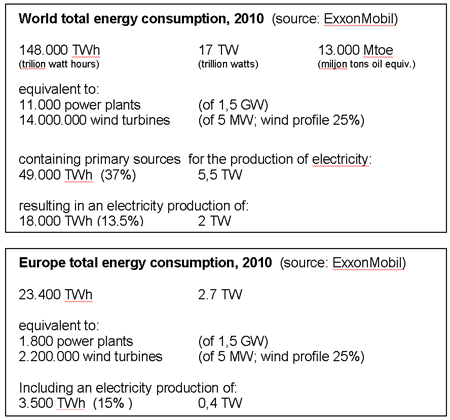

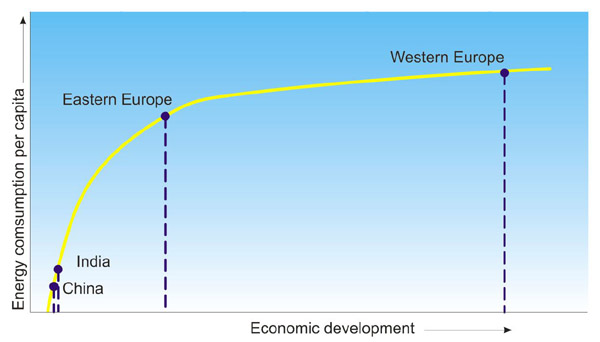
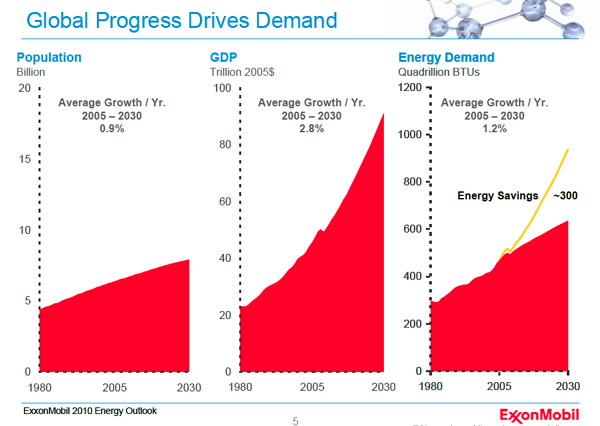
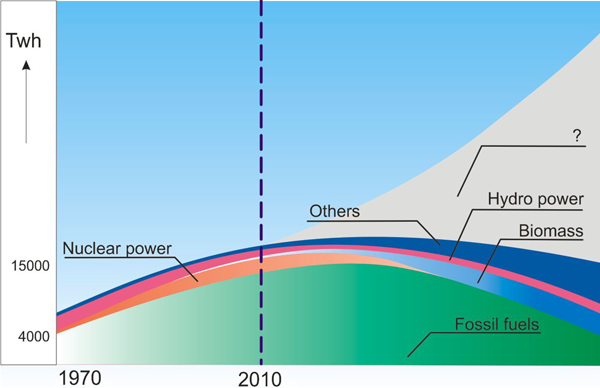
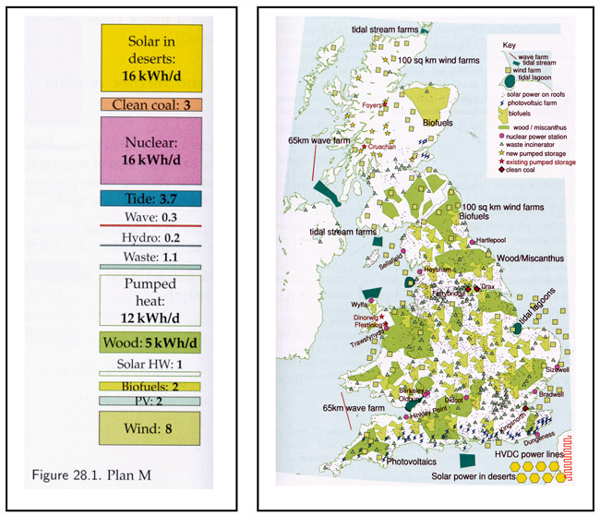

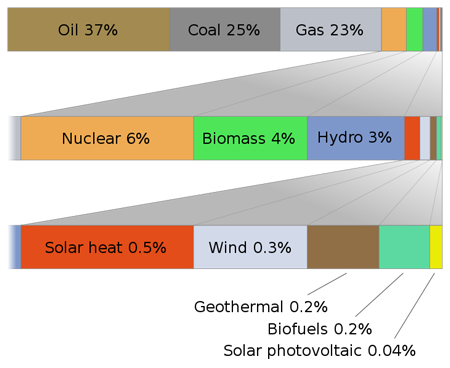

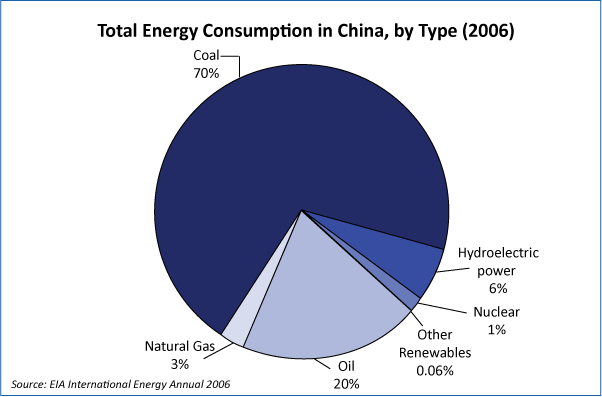






Ik denk dat het goed is als dit artikel geplaatst wordt op http://www.eike-klima-energie.eu/
@DWK
Goede suggestie, ik heb contact opgenomen.
Bedankt voor de engelse vertaling Theo, dit uitmuntende artikel is zo veel bruikbaarder op internet.
Zijn er al plannen voor een vervolg met bijv. doorgerekende cijfers van de energiekosten (per capita) gebaseerd op verscheidene scenario's? Voor sommige scenario's zul je natte vinger werk moeten gebruiken (zeker voor technologie die nog niet in gebruik is zoals Thorium reactoren of fusie), maar al met al krijg je dan nog een realistischer beeld dan de green-pie-in-the-sky die we tot nu to te eten hebben.
En durf je je ook te wagen aan het schetsen van een 'what-if' beeld van de gevolgen van de volledige overstap op 'groen' tegen 2050 (bijv. de kosten in mensenlevens van de terugval naar 3e wereld technologie)? Als de kosten van energie toenemen zullen ook grote koude gebieden onbewoonbaar (onbetaalbaar) worden etc. Het lijkt me leuk om een goed onderbouwd toekomstplaatje te hebben van de droom van 'de groenen', iets dat je kunt laten zien en vragen 'is dit nou echt wat je wou voor je kinderen?'.
@THD
Er was inderdaad vraag naar een vertaling. Veel internationale (expert-) fora over energie worden overspoeld door duurzame dromers, men zit soms te springen om een realistische benadering. Omdat geen enkele olie- of elektriciteitsmaatschappij het in zijn hoofd haalt om dermate politiek incorrecte informatie te verspreiden, komt het op eenlingen als ik aan.
Over je vraag:
Ik zit niet zozeer te denken aan een vervolg, als aan een artikel op hoger abstractieniveau, het territorium van Neven (waar is die eigenlijk gebleven?).
Rekensommetjes zijn overigens eenvoudig, ik heb me er al aan bezondigd in dit hoofdartikel (de Duitse PV opschalen naar 100%), en wat concreter door het doorrekenen van het officiële Duitse beleid voor 30% duurzame elektriciteit in 2035: http://climategate.nl/2011/07/13/atomausstieg-kin….
Vreemd genoeg blijken dit soort sommetjes overigens geen enkele indruk te maken op de idealisten. Die leven in een andere realiteit, waarbij alle zegeningen van de huidige fossiele samenleving voor vanzelfsprekend worden aangenomen, en de paniek om het CO2 monster blijkbaar alle rationele afwegingen vertroebelt….
Ik lees je artikelen met goede cijfers altijd met interesse, ik voel wel wat voor het voorstel dat ik vandaag las dat ieder onderzoek even nagerekend zou moeten worden door een béta, dan zou je veel vaken zulke duidelijk doorrekeningen van de feiten bij onderzoek zien.
Helaas hebben die-hard idealisten oogkleppen op als het op echte 'inconvenient truths' aankomt… Ze vertonen daarbij de kenmerken van religieuze fanatici, die ook floreren ondanks een sterke cognitieve dissonantie die hun wereldbeeld in contrast met de feiten oplevert. De menselijke psyche is niet rationeel, rationaliteit vereist bewuste inspanning…
Condensing boiler manufacturers claim that up to 98% thermal efficiency can be achieved,compared to 70%-80% with conventional designs (based on the higher heating value of fuels).
I therefore do not understand your comment on the very poor efficiciency of space heating.
@Steven
You are correct about the boilers thermal efficiency of the energy, joule for joule you get about 98%. However when looking from the exergy perspective (see http://en.wikipedia.org/wiki/Exergy) it is clear that you can better use the energy potential to generate power efficiently *and* use the waste (heat). The heat required for running a generator optimally is high, but the water to warm your house is generally below 90 C, so you can use the byproduct of the generator to easily reach that temperature. You can achieve the same purpose (heating) and also make good use of the full energy potential of the gas.
Het is gebruikelijk cost-efficiëntie economisch in alle productiestadia van de gebruikscyclus aanschaf, transformatie,transport en gebruiksefficiency door te rekenen op kostprijsbasis voor de consument (dat is dan ex-belastingen en ex-subsidies).
Men doet dat ver gevorderd met costing-models in de productie, constructie, bouw, chemie, pharma, logistiek, retail, wegtransport, rail, air etc.
De vraag is waarom dat doorrekenen nooit voor energievormen beschikbaar is. Ik heb dit punt al eens aangekaart bij Theo Wolters voor een costing-model voor energievormen.
Ik wil gaarne bijdragen aan zo'n model, ik heb aan diverse productie- en retail-costing modellen bij gedragen.
"Wind en zon zijn gratis maar niet bepaald goedkoop"
http://video.elsevier.nl/11852416
The US oil & gas revolution, and a disturbing inside view on the influence of Steven Chu on the Obama administration…
http://online.wsj.com/article/SB10001424052970204…
Kan Nederland overschakelen op duurzame energie? van Technisch Weekblad. Een gedachte experiment met onverwachte uitkomsten.
http://www.technischweekblad.nl/kunnen-we-oversch…
Als je de belangrijkste berekening achterwege laat, dan is die uitkomst helemaal niet zo onverwacht Donald.
In theorie is het allemaal mooi, maar in de praktijk komt het er op neer dat je je land onleefbaar en failliet maakt.
Kun je die groene berekeningen weer helemaal opnieuw gaan maken, want een failliet land gebruikt veel minder energie.
Hij had zich de moeite van 13 afleveringen kunnen besparen door doodgewoon 1/3 van de Noordzee vol te plempen met windmolens. Dan gaan we óók failliet, maar blijft ons landje tenminste nog enigzins leefbaar.